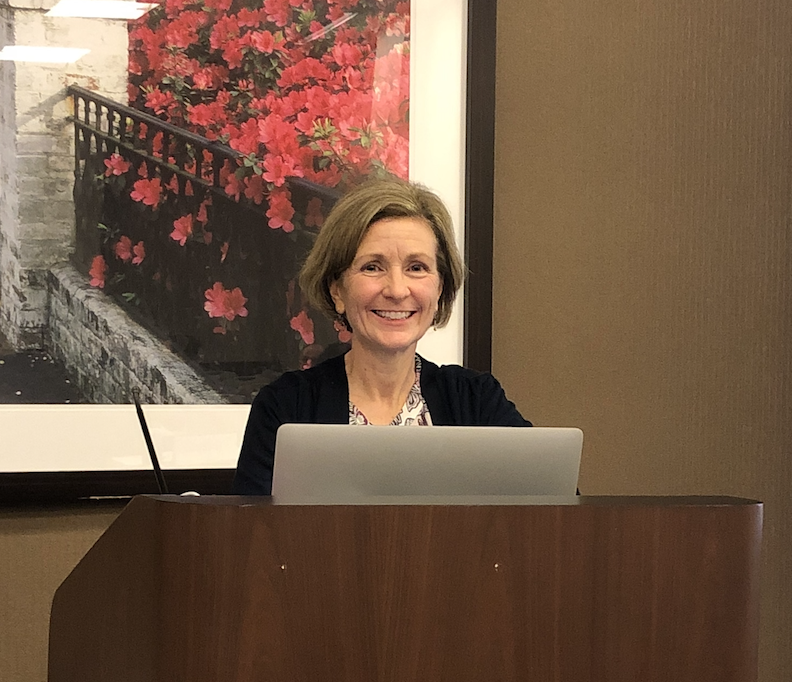StopHazing Redesign Prompts Reflection: Then and Now
January 19, 2021
By Dr. Elizabeth Allan, StopHazing Principal

Shifting gears amidst the pandemic brought many challenges but also some unexpected opportunities. Among these, for StopHazing, was reallocating resources that would ordinarily be allocated to conference travel and redirecting them toward improvements to our website, www.stophazing.org. While the site redesign project was on our “to do” list, lack of adequate time and funding were major obstacles to getting the job done. With the shift to virtual environments, we could continue sharing research at scholarly and professional conferences while also investing time and energy toward updating stophazing.org as the public face of our research.
The process of reviewing, rethinking, and updating the materials for the site was not without challenges, yet it also brought some unexpected opportunities. For example, taking time to reflect on the history and evolution of StopHazing as both a website and more recently, an organization, was illuminating. It has been more than two decades since StopHazing.org was the first website to provide information about hazing and its prevention. Back then, it was truly a “kitchen table” project with my partner providing the technical expertise to build the site and me providing content, all while our infant was sitting in the baby carrier or rocking in the baby swing nearby. While I was a doctoral student at the time, the content was largely based on material developed in the few years preceding when I was a full-time campus professional working in student activities and fraternity and sorority life. During those early years, I learned about the realities of student hazing by working with students experiencing it and from mentors including Eileen Stevens who lost her son, Chuck Stenzel, in a fraternity hazing incident at Alfred University and subsequently led the effort to get the first state law passed to prohibit hazing. Journalist and author, Hank Nuwer, wrote about Eileen’s experience in the book Broken Pledges which later became a TV movie. I was fortunate enough to meet and work with both Hank and Eileen during those years as they blazed a trail for drawing public attention to hazing and developing mechanisms, like state laws, to deter and provide more accountability for the harms experienced from hazing.
Fast forward. We’ve come a long way since the initial launch of stophazing.org back in the late 1990s. So many folks have, and are, contributing to the study of hazing and the practice of its prevention. While we’ve made many updates to stophazing.org since its founding, this redesign feels different. The new site reflects a number of shifts emblematic of growth, not only of StopHazing as an entity but also in the development of a field of study and practice. For example, while we have retained our name, we are working to more clearly communicate the behaviors we want to see – that is, the goal is not simply to end hazing but to replace it with positive behaviors, and environments that do more to cultivate a sense of belonging, inclusive leadership, and support of well-being for all students. Related to campus, school, and organizational environments, we are encouraged to see increasing recognition of the interconnectedness between hazing and other forms of interpersonal violence and larger systems of power operating in broader society and we are excited to be on the cutting edge of that work. Also, a new section of the site describes the StopHazing Research Lab and reflects a broader shift in understanding and valuing of research-informed practice.
The Clery Center and Soteria Solutions have been instrumental in collaborating with us to build practical resources that are grounded in research and the Harbor Institute’s expertise in many areas including cultural competence are also reflected in our resources. And the University of Maine, my professional home, has supported the research and related work in innumerable ways including participating in the first cohort of the Hazing Prevention Consortium. While new features reflect the growth and development of the field, it’s worth noting that we retained some foundational aspects of the original site that remain relevant even today. For example, defining hazing and describing why it needs to be prevented, and providing alternatives for building group cohesion and team unity have always been a part of the site and continue to be central. As we launched the new stophazing.org site last week and reflect on distance traveled, we are also excited for the journey before us. We hope you find a moment to explore the site and revisit in the weeks and months ahead as we continue adding research-informed resources in the service of our mission to promote safe and inclusive campus, school, and organizational environments where all members can thrive.
